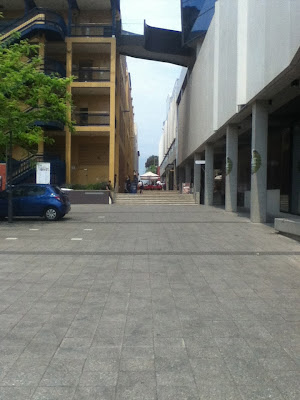 |
| Fenn Place, 2012 |
In the 1800s and early 1900s, it was the place to be...if opium dens, sly grog shops, thievery and the occasional shoot-out were your thing!
I found a surprisingly large amount of information about Fenn Place, so I've decided to split into several posts, each focusing on a different aspect of life in Fenn Place. This one is about the Salvation Army Women's Shelter.
The Salvation Army was active in the West End of the city throughout the late 1800s/early 1900s - the first Salvation Army Hall in Australia was built in Light Square in 1880. The Army ran several homes in the city - a Rescue Home in Gilbert Street; a maternity home in Carrington Street; a children's home in Norwood, among others. The Women's Shelter was originally in Rosina Street, but it moved to Fenn Place in about 1907 when "the gradual development of that quarter into a business street and the removal of many poor families to localities farther west induced the Army authorities to seek new premises in the western part of the city." (The Advertiser, 10 September 1909, p. 8). In 1907, The Advertiser referred to the Rosina Street shelter as a 'Slum Post' and admitted that Rosina Street was once one of the "lowest quarters" of the city, but had since become a respectable business thoroughfare so the Army decided to move further into the slums. Fenn Place is only about 600m west of Rosina Street, which only goes to show the vast differences in streets within Adelaide's Square Mile.
 |
| An old 2-storey building on Fenn Place (Honestly, I don't know the history of this building - it just looks pretty) |
The "best" of the women earned money and meals with domestic work, and Adjutant Scott could not say how the others occupied their time. Life at the Shelter was not easy, for the volunteers who ran it and the women who lived there. "There are some dreadful characters among them, and they abuse us horribly when, because there is no vacant bed, we are compelled to refuse them admittance...As you can see the place is kept clean and fresh, and I assure you it is not a nice undertaking to have to clean the dormitories after they have been occupied by some women, who are as unpleasant in their habits as it is possible to be." The Salvation Army volunteers (known as "Slum Post girls" in 1907) wore wide-brimmed hats and white aprons with 'For His sake' emblazoned in red on their chests. These girls supplied food, cleaned houses and cared for children if the parents were unwell, as well as supervising the women at the Shelter and organising their meals. They moved about 'the lowest parts of the city', but were never "interfered with" or "insulted". (The Advertiser, 27 June 1907, p. 6)
 |
| The same old 2-storey building on Fenn Place |
